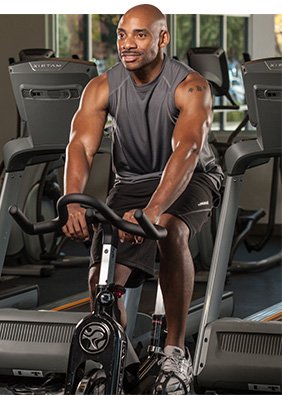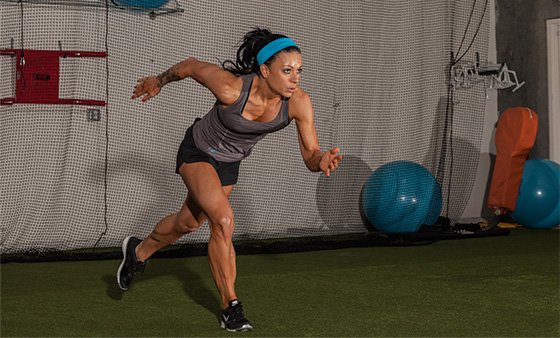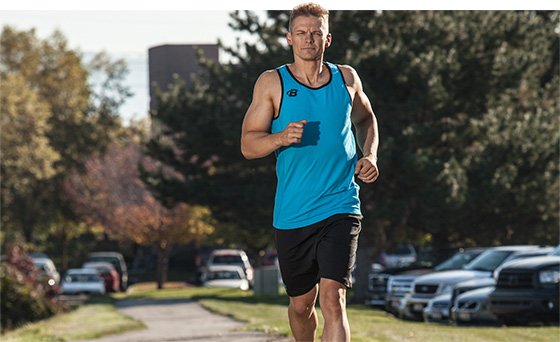It’s very important to develop all three heads of this muscle group, because if one is lagging, it will be painfully obvious.
In most cases, the medial and posterior deltoids need the most work because the anterior deltoids do get trained to some degree in a good chest workout. The other two heads don’t, however.
So let’s get to how to best workout your shoulders…
Shoulder Training 101
The two biggest mistakes most people make in their shoulder workouts are:
1. Focusing on the wrong shoulder exercises.
Many people focus too much on machine and isolation exercises, which are not the key to building big, round delts.
2. Focusing on high-rep training.
This mistake will stunt the growth of any major muscle group in the body, but it’s particularly detrimental when it comes to shoulder development.
These two points go against what a lot of people hear and assume about shoulder training. Namely the assumption that because the deltoids are smaller muscles, they respond better to high-rep training. This is false.
Many people also focus on the wrong shoulder exercises–usually isolation exercises that don’t permit enough progressive overload without risking injury. Well, like all major muscle groups in the body, the reality is shoulders respond best to heavy, compound weightlifting.
“But wait a minute,” you might be thinking. “INSERT SHREDDED FITNESS MODEL HERE does a lot of high-rep isolation shoulder exercises in his shoulder workouts, and he has amazing boulder shoulders… What gives?”
The answer is steroids. That might sound cynical, but it’s true.
When someone is on enough drugs, achieving muscle growth is mind-numbingly simple: he sits in the gym for a few hours every day doing rep after rep after rep, exercise after exercise, and his muscles get bigger and bigger. In this case, focusing on high-rep training is actually a good thing.
Furthermore, the shoulders (along with the upper arms, traps, and upper chest) are quite dense
in androgen
receptors, which are special types of proteins in cells that respond to certain hormones in the blood (including anabolic hormones like testosterone).
That’s why these parts of the body–the shoulders, upper arms, traps, and upper chest–grow very quickly when guys get on steroids, and can reach freaky levels of size.
That said, you can still build a great set of delts without drugs. It just takes time, and it takes the right approach to shoulder training. And the right approach as a natural weightlifter is very simple:
1. Focus on lifting heavy weights in your shoulder workouts.
If you want your shoulders to get big and strong, you’ll want to focus on the 4 – 6 or 5 – 7 rep range.
2. Focus on the shoulder exercises that safely allow for sufficient progressive overload.
We’ll talk more about this in a minute, but these are exercises like the Military Press, various types of Dumbbell presses, the Dumbbell Side Lateral Raise, and more.
Training volume and frequency is also important. Like "ideal" rep range, optimal training frequency is a hotly debated subject. The bottom line is it boils down to workout intensity and volume.
The lighter the weights and fewer the sets per workout, the more often you can train the muscle group. And, as a corollary, the heavier the weights and greater the sets per workout, the less often you can train the muscle group.
I’ve tried many different splits and frequency schemes, and what I’ve found works best is in line with an extensive review on the subject conducted by researchers at Goteborg University:
When training with the proper intensity (focusing on lifting heavy weights), optimal frequency seems to be about 40 – 60 reps performed every 5 – 7 days.
This not only applies to the shoulders but to every other major muscle group as well. If you’re an advanced weightlifter (3+ years of proper training under your belt), you can probably push this up to the 70 – 80 rep range, but any more than that and you will be risking over training.
Alright, let’s now look at the best shoulder exercises for muscle growth.
The Best Shoulder Exercises
My list of favorite shoulder exercises is pretty short and simple. These are the exercises I’ve used to dramatically improve my own shoulders, and that will do the same for yours.
1. Seated or Standing Military Press
Barbell pressing is the most effective way to build your shoulders because although it focuses on the anterior head, it also involves the other two, and it allows you to push heavy weight without risking injury.
I prefer the Seated Military Press because the standing variation requires quite a bit of balance and lower back stability to perform, and as I squat and deadlift heavy every week, I don’t feel I need any more lower back training.
Here’s how to properly the Seated Military Press:
The key point here is bringing the weight down to chest in a controlled manner. Don’t stop at 90 degrees for fear of your shoulders–so long as you keep your elbows under the bar and resist the urge to flare them out, you’ll be fine.
Here’s how to do the Standing Military Press correctly:
2. Seated Dumbbell Press
The dumbbell variant of the press is also a great exercise for building overall strength and size. Here’s how it’s done:
3. Arnold Press
The Arnold Press is a variation of the traditional Dumbbell Press, and uses an increased range of motion to further overload the anterior deltoid. Here’s how to do it:
4. Dumbbell Front Raise
The Dumbbell Front Raise is an effective exercise for targeting the anterior deltoid. Between this and the presses, you don’t need anything else for this front head of the muscle group. Here’s how to do it:
5. Side Lateral Dumbbell Raise
The Side Lateral Dumbbell Raise is the most effective exercise for building the medial (middle) deltoid. This head is usually underdeveloped when compared to the anterior because people tend to focus on chest and shoulder pressing.
Here’s how to do it:
The posterior (rear) deltoid is the smallest and weakest of the three heads, but still needs some love if you want to have a “three-dimensional” shoulder that doesn’t fall flat in the back.
The Rear Dumbbell Raise is a simple and effective exercise for building this posterior head. Here’s how to do it:
The Rear Delt Barbell Row is another great exercise for targeting the posterior deltoids. Here’s how to do it:
That’s it on the exercises.
If you don’t get stronger, you won’t get bigger. But if you do work on building your strength on these exercises, and you eat enough food to grow, your shoulders will get bigger and stronger.
That’s it–just 9 – 12 heavy sets for your entire workout. If you’re an advanced lifter, or you feel you have more in you at the end of the workout, you can do the final 3 sets, but don’t do more than that or you will likely wind up over trained at some point.
I guarantee you that if you combine that shoulder workout with a proper nutrition plan, you will be very happy with how your shoulders respond.

































